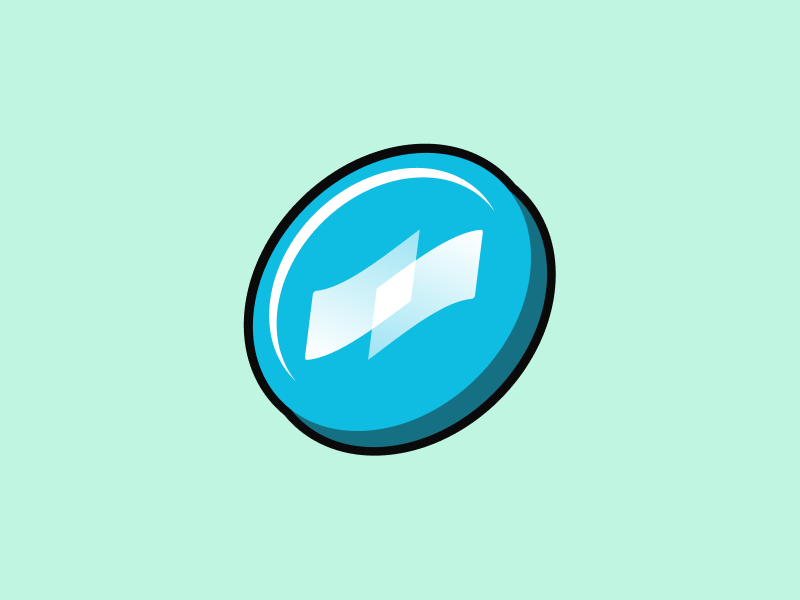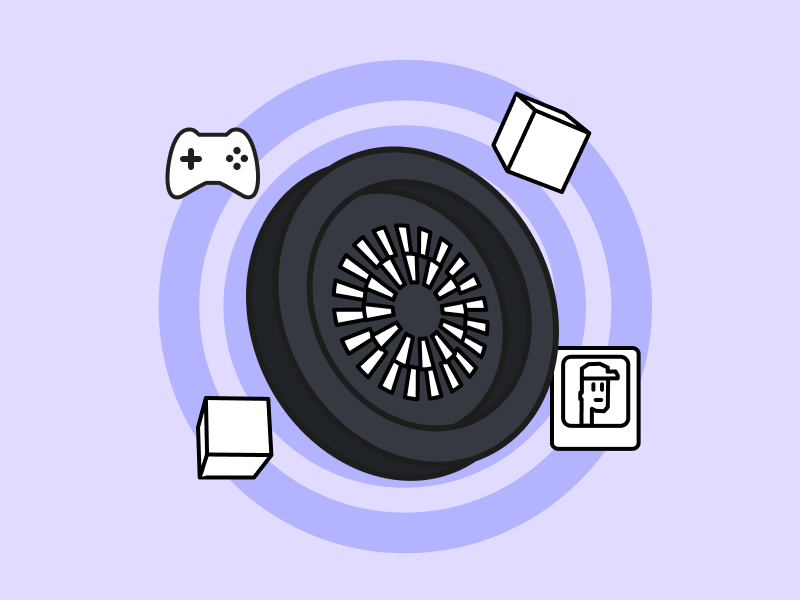What Is Initial DEX Offering (IDO)?

Investors in the cryptocurrency market are quite familiar with fundraising models like Initial Coin Offering (ICO) and Initial Exchange Offering (IEO), which gained popularity between 2016 and 2019. However, these models have been criticized for their limitations. In response, a new method called the Initial Dex Offering (IDO) emerged in 2020. This article will explore what IDO is, how it works, and its advantages and disadvantages.
Article Summary
- 💰 The Initial DEX Offering (IDO) is a method of crowdfunding on decentralized exchanges (DEX) that enables cryptocurrency projects to raise funds.
- 🥇 IDO emerged with the popularity of DEX in 2019, with Raven Protocol being the first crypto project to conduct an IDO on the Binance exchange on June 17, 2019.
- 🛃 The IDO process encompasses several stages, including credibility checks, token price determination, investor whitelisting, smart contract-based investing, liquidity pool formation and fund transfer, and token trading initiation on a DEX.
- ✍🏻 IDO offers benefits such as high liquidity, fair and open participation, speed, cost-effectiveness, and transparency. However, it has weaknesses like less rigorous vetting processes, fraud risk, and regulatory challenges.
- 💼 Participating in an IDO only requires a cryptocurrency wallet. It is crucial to conduct thorough research, use a reputable launchpad, and carefully evaluate an asset’s fundamentals before making investment decisions.
What Is Initial DEX Offering (IDO)?
An Initial DEX Offering (IDO) is a method of offering coins or crypto tokens that occur on decentralized exchanges (DEXs). IDO aims to facilitate fundraising for crypto projects through crowdfunding on DEXs.
Unlike ICOs, IDOs list tokens directly on decentralized exchanges (DEXs). The increasing popularity of IDOs is due to their ability to allow cryptocurrency projects to raise funds via liquidity pools without intermediaries, which offers investors the benefit of immediate token trading. Additionally, IDOs are generally more equitable to retail investors compared to ICOs.
When Was the First Initial DEX Offering Conducted?
The emergence of numerous decentralized exchanges (DEXs) in 2019 marked the beginning of IDOs’ rise to prominence. Subsequently, the decentralized nature of DEXs attracted many crypto projects, leading to the recognition of IDOs as a superior method for token launches and fundraising. IDOs continue to be conducted frequently on various emerging networks, including Arbitrum.
Raven Protocol

On June 17, 2019, Raven Protocol made history by conducting the first-ever crypto IDO on the Binance exchange. The total supply of Raven tokens was set at 10 billion, out of which 3% (equivalent to approximately $500,000) or 300 million RAVEN were allocated for the IDO.
Raven Protocol is a learning training protocol that leverages blockchain technology to provide fast and cost-effective solutions for transforming the artificial intelligence industry. By sharing their computer resources, users are rewarded with Raven tokens, which serve as utility tokens for AI training.
Raven Protocol tokens can also be traded on the PINTU app. Explore the range of tradable tokens here: https://pintu.co.id/market.
How Does an IDO Work?
- Due Diligence: To maintain a project’s credibility, the DEX team conducts a thorough vetting process before conducting an IDO. This step weeds out most fraudulent projects, thereby protecting investors.
- Pricing: After passing the vetting process and being accepted, the next step is to determine the price of the token supply that will be offered.
- Whitelisting: Investors can either register their wallet addresses or complete marketing tasks to be eligible to buy tokens. However, some projects allow unrestricted token purchases during the IDO without using whitelists.
- Investing: Whitelisted investors can lock the funds they wish to invest into a smart contract on DEX. In return, investors will receive the project’s tokens when they are released.
- Liquidity pool and fund transfer: Funds raised are stored in a liquidity pool along with the project’s tokens on the DEX to ensure trading liquidity from day one. The remaining funds are transferred to the project. At the same time, the project’s tokens are transferred to the investors’ wallets.
- Start of trading: After funds are exchanged between parties, the liquidity pool opens for trading and the token price is determined by the market.
To build trust among investors, IDO has streamlined the token sale process by utilizing DEXs. Instead of directly selling tokens to investors, crypto projects offer their tokens to a DEX. Afterward, the DEX automatically executes the final distribution and fund transfer. This entire process is automated and overseen by smart contracts on the blockchain.
Advantages and Disadvantages of IDO
Advantages
- High liquidity: The biggest benefit of participating in an IDO is the guaranteed liquidity of the newly acquired tokens. Liquidity pools and smart contracts in the decentralized exchanges where IDOs take place ensure participants can trade their tokens.
- Fair and open participation: IDO allows anyone with internet access to participate, making it a democratic mechanism.
- Speed and cost-effectiveness: IDO provides fast liquidity at a much lower cost than traditional methods.
- Transparency and Decentralization: Direct interaction between project developers and investors ensures high transparency and eliminates the need for a central authority.
- Elimination of Whale Investors: The IDO mechanism can prevent a single investor from buying many tokens, ensuring balance in the liquidity pool. The number of tokens an investor can buy is limited.
Disadvantages
- Less rigorous vetting process: Fraud becomes an issue due to the ease of launching tokens through the IDO mechanism compared to the IEO. In some cases, fraud is perpetrated by groups pretending as legitimate projects and issuing fake smart contracts to trick participants into sending funds.
- Favoritism: IDOs may favor project developers and private investors. Interested investors should be aware of this and check the tokenomics first.
- New concept: DeFi and DEX are still relatively new and more complex concepts compared to custodian platforms. As a result, it may be difficult for beginners to participate in IDOs.
- General market risk: The biggest obstacle is general market risk. The bear market in crypto can be quite brutal, and IDOs tend not to perform well when investor sentiment is overly negative. Some projects decide to cancel or postpone IDOs due to poor market conditions.
- Regulatory challenges: Regulations and legal considerations are one of the hurdles for IDOs. The lack of clear regulations and guidelines leaves investors uncertain about the legal status of their investments.
How to Participate in an IDO?
Before participating in an IDO, ensure you have a crypto wallet and carefully review the terms and conditions. These conditions often contain instructions on how to lock a specific amount of funds in preparation for the IDO. Most of these funds will be returned once the subscription process is complete.
Here are some steps to keep in mind when participating in an IDO:
- Use the Correct Link: Scammers exploit the hype around IDO and create fake subscription pages to deceive potential investors.
- Use a Trusted Launchpad: Using a trusted DEX is the best chance for users to receive tokens after the mass sale. Some trustworthy DEXs include Uniswap and PancakeSwap.
- Research: Investors should conduct thorough research on a project before investing.
- Read the IDO Terms and Conditions: Users’ crypto tokens can be locked for a long period after the IDO. It’s crucial to understand the tokenomics of a project before investing.
- Invest Wisely: Crypto token sales can be highly volatile. Users should consider this before investing.
Platforms for IDO
Several popular DEXs facilitate IDOs, including Uniswap and Sushiswap, which are built on Ethereum and offer platforms for token launches. Sushiswap even has a Minimal Initial SushiSwap Offering (MISO) specifically for IDOs.
Next, there’s Balancer, an Ethereum-based platform that provides unique multi-token pools for IDOs. Moving on to Polkastarter, a cross-chain IDO platform on the Polkadot network, it’s a favorite due to its interoperability, scalability, and security. Finally, the on-chain liquidity protocol Kyber Network includes the Dynamic Market Maker (DMM) protocol for IDOs.
If you’re interested in participating in IDOs, you can visit CoinMarketCap or CoinGecko to track projects that will be conducting IDOs. Make sure to monitor these platforms regularly to participate early.
Conclusion
The Initial Dex Offering (IDO) has become a popular way to raise funds in the cryptocurrency world. It offers investors easy access, decentralization, and early participation opportunities. As DeFi and DEXs continue to advance, more crypto projects are choosing IDOs over ICOs and IEOs to secure funding and grow their reach.
Investors must be vigilant against fraud and fake token sales associated with IDOs. Thorough research is critical before making investment decisions.
References
- Real Vision, What is an Initial DEX Offering (IDO)?, Realvision, accessed on 21 November 2023.
- Jeffrey Craig, What Is An IDO In Crypto: IDO vs ICO Explained, Phemex, accessed on 21 November 2023.
- Vegavid, What is an IDO (Initial DEX offering) and How It Works in Crypto?, accessed on 21 November 2023.
- Unchainedcrypto, A Beginners Guide to Initial DEX Offerings (IDOs), accessed on 21 November 2023.
- Raven Protocol, Introducing the Raven Protocol (RAVEN) Initial DEX Offering, Medium, accessed on 21 November 2023.
- Tokenminds, Crypto IDO Ultimate Guide – Mastering the Future of Fundraising in 2023, accessed on 21 November 2023.
- Zebpay, What Is An IDO And How Does It Differ From An Initial Coin Offering (ICO)?, accessed on 21 November 2023.
Share
Related Article
See Assets in This Article
RVN Price (24 Hours)
Market Capitalization
-
Global Volume (24 Hours)
-
Circulating Supply
-


